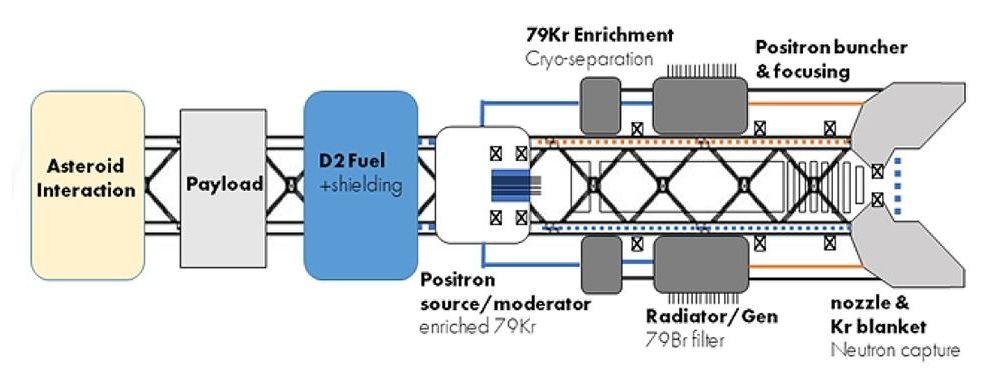Ryan Weed Positron Dynamics.
Current state of the art in-space propulsion systems based on chemical or ion propellants fail to meet requirements of 21st century space missions. Antimatter is a candidate mechanism for a propulsion system that could transport humans and/or robotic systems with drastically reduced transit times, providing quicker scientific results, increasing the payload mass to allow more capable instruments and larger crews, and reducing the overall mission cost. Unfortunately, previous propulsion concepts relied on unrealistic amounts of trapped antimatter — orders of magnitude away from any near-term capability. The goal of this effort is to determine the feasibility of a (TRL 1–2) radioisotope positron catalyzed fusion propulsion concept that does not rely on trapped antimatter. Such a transformative technology inspires and drives further innovation within the aerospace community and can be applied to a relevant mission — the bulk retrieval of an entire asteroid into translunar space — a mission of great scientific and commercial interest (e.g. asteroid mining). The idea of harnessing resources from asteroids goes back more than a century to Tsiolkovsky. Fundamentally, for asteroid mining to become financially viable, the cost of the retrieval spacecraft must be less than the value gained from the asteroid. Therefore, developing technology (e.g. efficient propulsion systems) that decreases the mass and complexity of the retrieval spacecraft must be a priority.
Editor: Loura Hall
